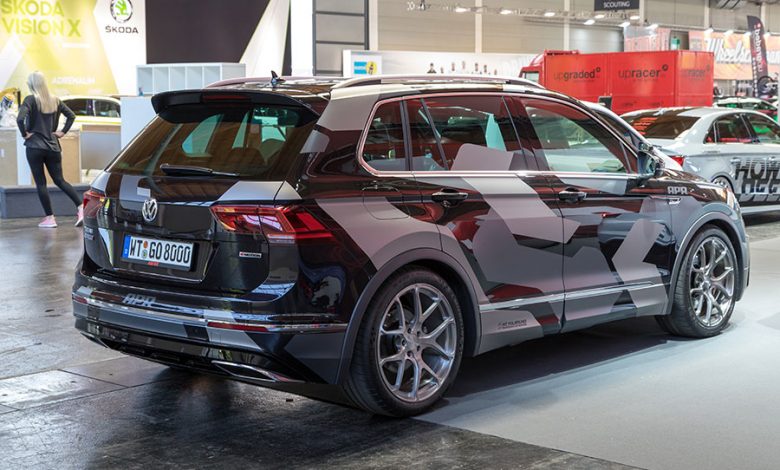How much does it cost to wrap a car? A Complete Review

Last Updated on August 19, 2022 by
People have been customizing and personalizing their cars for, well, as long as there have been cars-and vinyl wrapping is one of the newest and coolest ways. Having already thought about how your vehicle will look when it’s shrink-wrapped in an entirely new color, the next step is understanding how much that will cost—and whether the price is worth it.
Here’s where we can help. Wrapping your vehicle in vinyl has some distinct advantages over repainting it, but it also has a few disadvantages worth considering. You can wrap your car for a reasonable price after reading these details.
The Colors and Options available:
Each panel of your car is covered with large vinyl decals, including the hood, doors, fenders, roof, deckled, and bumpers. The body is covered in a wrap. No colors from your car’s original paintwork will appear on the exterior. Wraps act the same way as paint jobs in that sense.
Wraps can protect your car’s paint if they are applied correctly and maintained as recommended. Customizations are possible as well. Paint comes in a variety of colors and finishes, including glossy and matte. Furthermore, metallic and chrome colors are available. Because wraps are designed with a computer program, you can also pick from a seemingly endless range of graphics and designs to give your car a unique look. Do you want your ride to look like it’s made of carbon fiber? It’s no problem.
Wraps offer a broader array of possibilities than paint, but they can also be quickly and easily removed-you essentially peel them off-and they allow you to apply graphics or unique paint colors and combinations that would otherwise be difficult. Wraps are an easy way to place advertising or a logo on a vehicle, and they are easily removed when the vehicle needs to be replaced. Wrapping is especially smart if you’re leasing a car, as leases often have restrictions and high charges if you alter the stock condition you received the car in.

There are several options for wrapping the exterior, such as the hood or doors, as well as the whole car. Most car owners apply clear wraps to protect the front ends of their vehicles from stone chips and to make them virtually invisible. On the nose of our boat, there was a clear protective film. The Porsche Boxster S was a long-term vehicle and it was inconspicuous.
Condition of the vehicle:
Whether your wrap works or not will depend on the condition of your car. It is just like painting over scratches, dents, and dings that would show up if they were not repaired first. When the vinyl decals are damaged or corroded, they may not adhere properly.
If your car’s paint is peeling or oxidized, some shops will not apply a wrap or will not guarantee their work. Wraps that are applied to a poor surface will not last as long as those that are applied to a better surface. Depending on the climate and exposure to the elements, you can expect your car’s vinyl wrap to look its best for about four to five years, if the paint is in good shape. After that length of time, it also becomes harder to remove.
Process for applying:
You must get your paint surface as smooth and clean as possible before wrapping your car. Washing and detailing can take several days, and you might need to use a power washer as part of the process. Decal adhesion will be improved by doing this.

The shop may remove the headlights, bumper covers, and taillights once the car is cleaned so that the vinyl covering can be wrapped around the edges and into the crevasses. It is possible to apply the wrap without removing those panels, but removing those components may result in a better application if the shop takes the time to work around the difficult areas.
Ensure that your paint surface is as smooth and clean as possible before wrapping forward wraps and graphics may require several layers. Last but not least, check for air bubbles and smooth out the wrap.
Wrapping price ranges:
Prices vary greatly depending on the size of your car, the complexity of the wrap, and how much labor is involved. The front and rear bumper covers on certain cars can be difficult to remove. A body with particularly curvy contours or panels with sharp creases may require more work than a body that is smooth and flat. Generally, a two-door sports coupe will be less expensive to insure than a four-door sedan of similar size.
Wraps for small cars, such as Fiat 500s, start as low as $2000 at Texas-based Austin Extreme Graphics. The starting price for a larger coupe, such as a Chevy Camaro or Ford Mustang, and smaller SUVs, trucks, and vans is around $3500.
For high-end treatments, such as simulated carbon-fiber vinyl, expect to pay an additional $6000 and up for chrome treatments. Depending on the difficulty, the materials, and the vehicle size, the cost of exotic wrapping can reach as much as $10,000 or more. Wrapping inside the doorjambs, for instance, can take an additional two to three days, adding significant time and cost.
Requirements for Care:
How much care you need to take with a wrapped vehicle depends on where you live. Over time, high temperatures and the baking sun can cause the wrap to break down. Wrapped cars should be parked in a garage or at least covered with a car cover to protect them from the elements. As well as warm-weather states, cold-weather states pose challenges. Snowy areas use a lot of salt on their roads. If you live in a non-harsh environment and the wrap has been applied professionally, it can last four to five years.
It is generally easy to change or remove a wrap. The wrap can cost $500 or even more if it has fused to the paint surface, in which case it won’t easily peel off.
Read More: Car Insurance Benefits You Should Know




